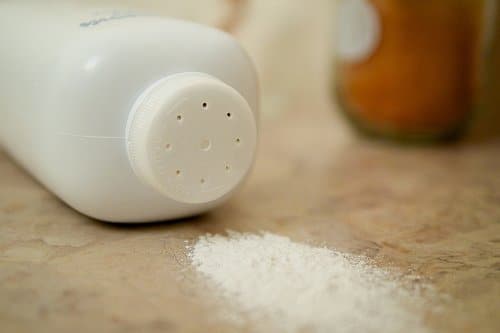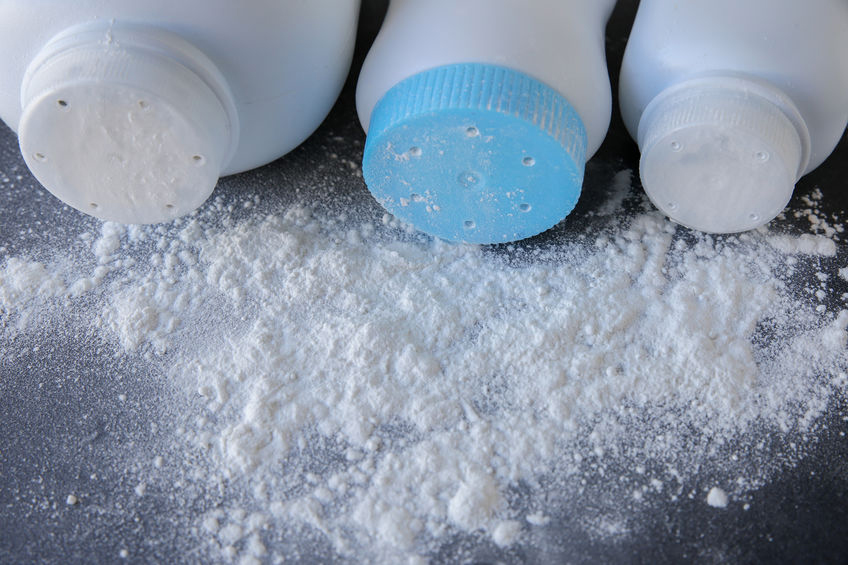




Hearing the word cancer is always devastating. If you or a loved one received a cancer diagnosis, you know it’s scary. But, what if the cancer was preventable? If you or your loved one used talcum powder and developed ovarian cancer, the product might be to blame.
According to some recent studies, there could be a link between talcum powder and ovarian cancer. What’s worse, talc manufacturers might’ve been aware of this and chose to sell their product anyway.
If you or someone you love developed cancer because of their product, they should be held accountable.
Console and Associates has 25 years of experience handling personal injury claims. Over that time, we’ve worked with law firms across the country, including those that handle talcum powder lawsuits. If we cannot handle a claim, our goal is to connect you with an experienced attorney who can. If you suffered as a result of exposure to talcum powder, call today. We’ll ask you a few questions so that we can put you in touch with the right attorney.
Is there a link between talcum powder and cancer? Yes, according to research published in Cancer Prevention Research. The study found that using talc in the perineal (groin) area increases the risk of developing ovarian cancer by as much as 30%.
The potential connection between talc and genital or ovarian cancer isn’t new. One of the first serious articles appeared in 1971 in the British Journal of Obstetrics and Gynecology. Researchers reported finding talcum powder in 75% of the ovarian tumors they examined. In 1982, a study of epithelial ovarian cancer appeared in the Cancer journal. A large number of woman in the study diagnosed with cancer reported regularly using talcum powder.
Obstetrics and Gynecology published another study in 1992. In it, they investigated cancer cases at Brigham and Women’s Hospital in Boston. The investigation concluded that there was a link between talc use and a greater risk of ovarian cancer. As recently as 2011, a study published in Cancer Causes & Control found a “modest association” between talc powder and ovarian cancer.
Manufacturers like Johnson & Johnson continue to dispute these studies.

If you used talcum powder and later received an ovarian cancer diagnosis, you could be eligible for a claim. Fighting cancer isn’t just emotionally taxing; it’s financially taxing as well. Paying for treatment and doctor visits often leaves families struggling.
If talcum powder caused your cancer, you deserve compensation. Money from a claim could mean the difference between getting the care you need or not.
Other women affected by talcum powder filed lawsuits, and many of them received compensation that helped their financial situation. But their lawsuits weren’t only about the money; they created accountability. The companies making talcum powder have a responsibility to make their products safe. One way to make sure they do this is by holding them accountable when they don’t.
There are thousands of lawsuits filed by families just like yours. They all want the same thing: justice and accountability.
In the past few years, Johnson and Johnson lost multiple talc powder lawsuits. Juries around the country awarded their victims large settlements. There are still thousands of cases pending.
Disclaimer: Results may vary depending on your particular facts and legal circumstances.
$72 Million – Jacqueline Fox
In Fox vs Johnson & Johnson, the family of a woman who died from ovarian cancer sued the manufacturer. They claimed that the victims regular use of talcum powder was responsible for her ovarian cancer. A jury in Missouri ordered the company to pay $72 million in damage. Jacqueline Fox’s family received $10 Million in their personal injury claim and an additional $62 Million in punitive damages.
$55 Million – Gloria Ristesund
In another landmark jury verdict in Missouri, Johnson and Johnson was ordered to pay $55 million to Gloria Ritseund. This included $5 million in compensatory damages and $50 million in punitive damages.
$417 Million – Eva Echeverria
In the largest talc settlement to date, a jury in Los Angeles awarded $417 Million. This includes $70 million in compensatory and $347 Million in punitive damages. The plaintiff, Eva Echeverria is terminally ill and had to give her testimony via a video recording. The jury found a connection between her use of Johnson & Johnson baby powder and her ovarian cancer.
 Talcum powder comes from the mineral talc, a rock-like clay found throughout the world. More than 100 years ago, people discovered that powdered talc helped reduce the occurrence of diaper rash. Because of this, Johnson & Johnson released a talc-based baby powder. Since then, it became a common ingredient in many powder-based cosmetic products.
Talcum powder comes from the mineral talc, a rock-like clay found throughout the world. More than 100 years ago, people discovered that powdered talc helped reduce the occurrence of diaper rash. Because of this, Johnson & Johnson released a talc-based baby powder. Since then, it became a common ingredient in many powder-based cosmetic products.
In addition to reducing irritation, talc powder also absorbs moisture and reduces odor. A thin film of the powder even appears on different types of chewing gum, since it helps keep the wrapper from sticking.
The Link Between Talc & Asbestos
But in recent years, concern for the safety of talcum powder continues to grow. One reason the mineral is potentially dangerous is that it’s often found in proximity to asbestos. In its natural form, talcum has trace amounts of asbestos.
Asbestos is another mineral that, until recently, was a popular material. But after decades of research and denial, the science for that material was irrefutable. The popular insulator asbestos caused the deadly cancer mesothelioma.
Since the 1970s, laws required that all talcum products sold in the United States be free of asbestos. While the research on talc itself is still ongoing, its troubled history should’ve given Johnson and Johnson pause. Despite decades of research, they continue to deny the apparent dangerous link between talcum powder and cancer.
Should I Keep Using Talc Powder?
Currently, there’s no official recall on talcum powder. The CDC notes that you should avoid inhaling talc but doesn’t list any chemical or physical dangers for talc. Doctors from the Mayo Clinic suggest that women should limit the use of talcum powder in the genital area. Some evidence does show that particles of talc may migrate up through the genital tract. Even though there’s no recall, inexpensive alternatives make it easier to be safe if you choose to avoid it altogether.
Talc Alternatives
There are some alternatives to talcum powder. Probably the best-known alternative is cornstarch. In fact, many baby and body powders now use cornstarch instead of talcum powder. The material, derived from the corn plant, works in a similar way to talc, making it a popular substitute.
Note: Be sure to check the label to see if it is a true cornstarch powder or one that contains both cornstarch and talcum mixed together.
Pediatricians encourage parents to avoid using baby powder when changing diapers. The danger, inhaling the powder. Parents who do use it have to be careful keeping it away from the baby’s face. Pediatricians noted that breathing in talcum powder can result in chronic, acute lung disease. Breathing talc particles can also trigger asthma symptoms or pneumonia.
Adult use of talcum powder may also result in injury. The International Agency for Research on Cancer called using the powder around your groin area as potentially carcinogenic.
Any form of cancer is potentially life-threatening. But, some forms of cancer are more dangerous than others. Ovarian cancer is particularly dangerous because there are few symptoms in its early stages.
This makes discovery more likely only after cancer has a chance to spread. According to the CDC, approximately 20,000 women are diagnosed with ovarian cancer each year in the United States. The most recent numbers show that more than 14,000 women die from this type of cancer each year.
Ovarian Cancer Prognosis and Survival Rates
The prognosis for women with ovarian cancer depends on several factors, including:
The overall five-year relative ovarian cancer survival rate is approximately 48%.
The stage of cancer plays such a huge role in the overall prognosis. The prognosis for ovarian cancer is often worse than other types of cancer because more than 80% of ovarian cancer cases are diagnosed after cancer has spread.
According to the Mayo Clinic, ovarian cancer is any form of cancer beginning in the ovaries. This type of cancer may not cause symptoms in the early stages, so it often goes undetected until it begins spreading. When it gets to the later stages, it’s often tough to treat and often fatal. When ovarian cancer is found in the early stages, there’s a greater chance of treating it successfully.
Even as it reaches advanced stages, ovarian cancer produces symptoms that may be mistaken for other common conditions. Some of the symptoms and signs of ovarian cancer include:
The type of ovarian cancer is determined by the type of cell where cancer begins. The three types of ovarian cancer include:
Germ Cell Tumors
These tumors begin in the cells that produce eggs. This type of ovarian cancer is very rare and more common among young women.
Epithelial Tumors
Epithelial tumors begin in the very thin layer of tissue covering the ovaries on the outside. Epithelial tumors account for about 90% of ovarian cancers.
Stromal Tumors
A stromal tumor begins in hormone-producing cells within ovarian tissue. Stromal tumors are usually diagnosed earlier than other types of tumors. These tumors account for only about 7% of ovarian cancers.
Researchers are unsure about what causes ovarian cancer. However, certain factors appear to increase the risk of this type of cancer. Risk factors for ovarian cancer include:
In addition, recent studies link an increased risk of ovarian cancer and certain materials, such as talcum powder.
Most patients diagnosed with ovarian cancer have only one treatment, surgery. The procedure usually involves the removal of one or both ovaries. Depending on the spread of cancer, the uterus, fallopian tubes, and other tissue could be removed. The goal is to remove as much of the cancerous material as possible. If discovered early, the surgery is less invasive.
After surgery, most women receive chemotherapy. This powerful medication helps kill cancerous cells that remain. During advanced cases, chemotherapy might occur both before and after surgery.
After having surgery, most women are treated with chemotherapy.
You already know that baby and body powders contain talcum powder. But you may be surprised to find that many other common products contain it, too. The mineral is a popular additive to cosmetics thanks to it’s absorbent properties. Some popular products that contain talc include:
 Multiple scientific studies tell the same story: there is a link between talcum powder and ovarian cancer. From those first studies almost 50 years ago to today, the research urges, at best, caution. What would you have done differently if you knew this earlier? Would you have used talcum powder? Would you recommend it to your family and friends? Would you sell it?
Multiple scientific studies tell the same story: there is a link between talcum powder and ovarian cancer. From those first studies almost 50 years ago to today, the research urges, at best, caution. What would you have done differently if you knew this earlier? Would you have used talcum powder? Would you recommend it to your family and friends? Would you sell it?
When did Johnson & Johnson learn about these risks? What did they do once they knew about the studies?
Thousands of woman around the country are suing talc manufacturers like Johnson & Johnson. In the claims that went to trial, women and their families won millions, holding the companies accountable. While previous results don’t necessarily indicate how future claims will go, these verdicts helped hold Johnson and Johnson accountable for the damage their product caused.
You and your family are suffering an unimaginable burden. That’s something that no amount of money can ever make right. But, you do have the chance to make a difference. The money from a claim could help you cover medical bills, but it might also prevent other families from suffering like yours.
